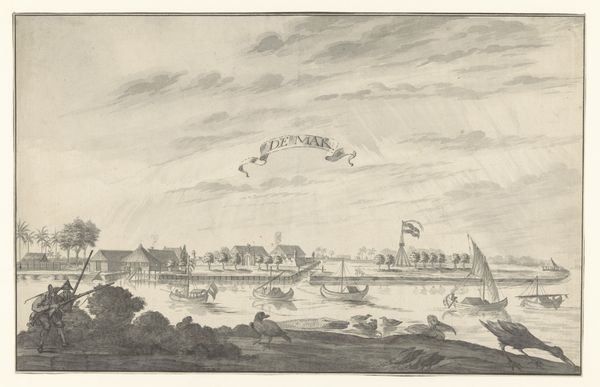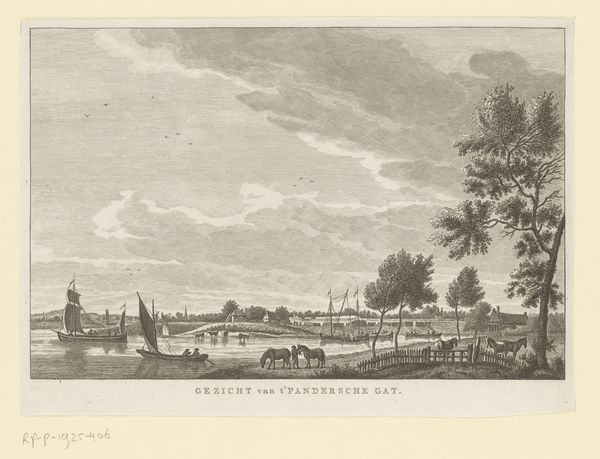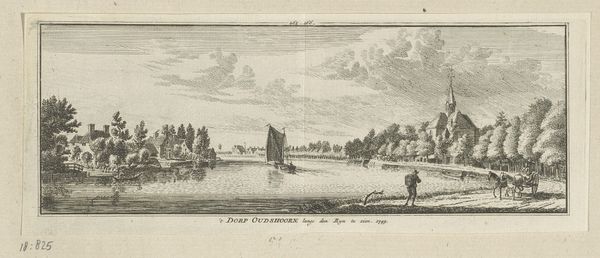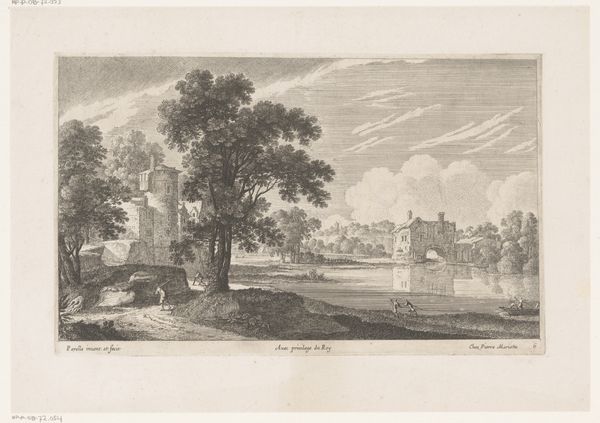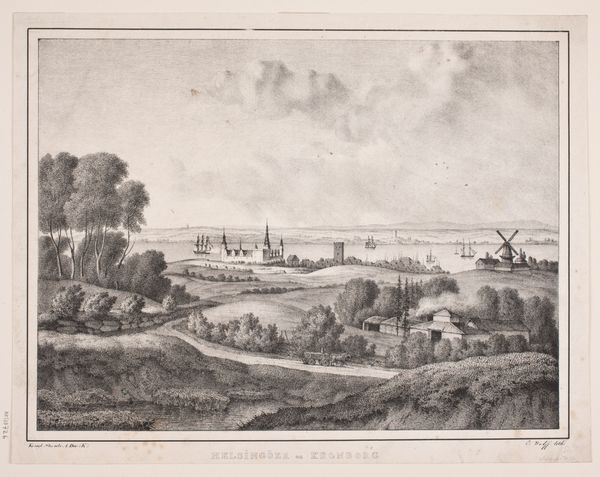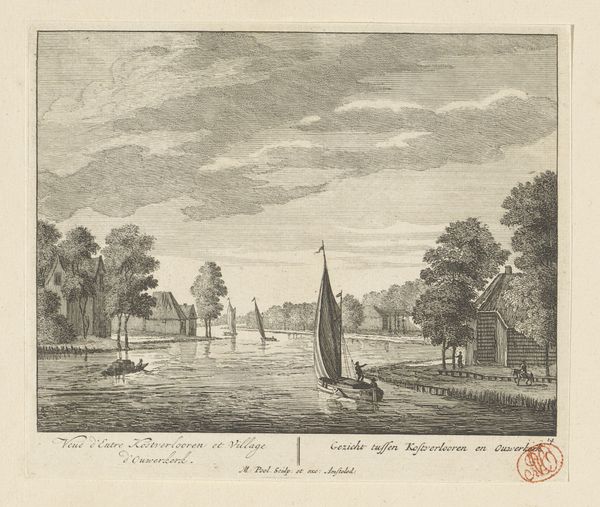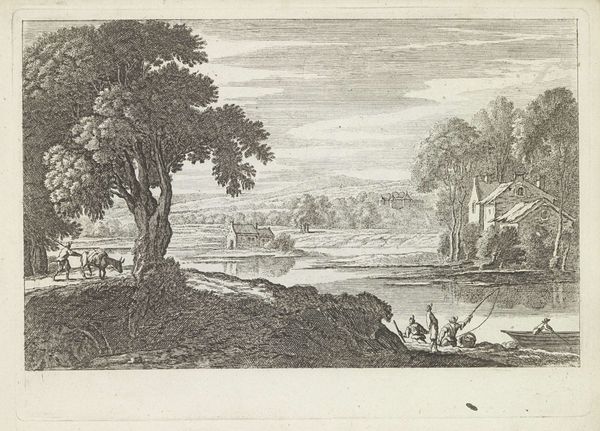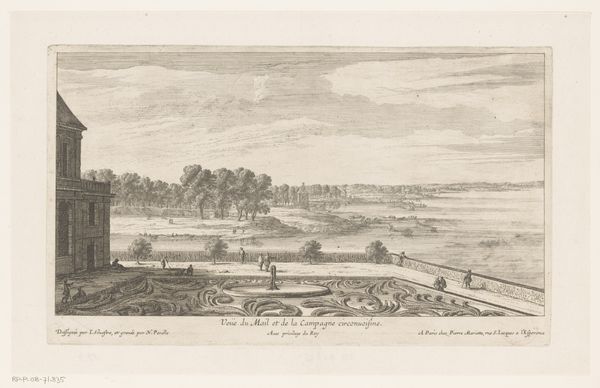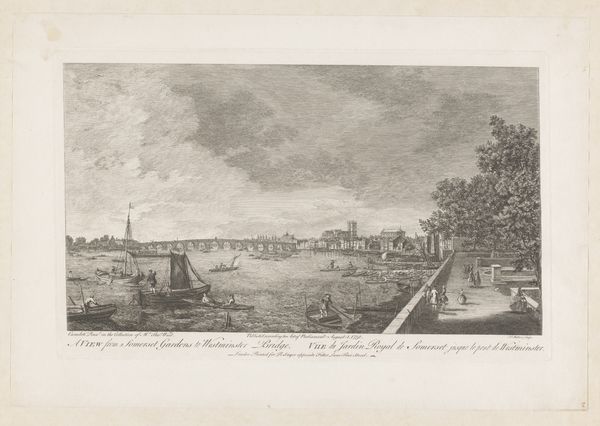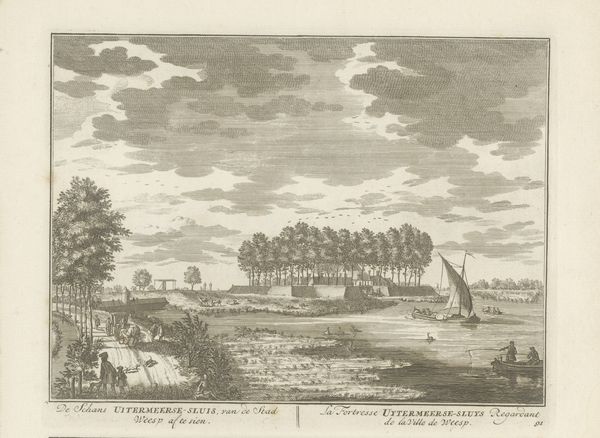
drawing, pencil
#
drawing
#
dutch-golden-age
#
landscape
#
pencil
#
orientalism
Dimensions: height 320 mm, width 492 mm
Copyright: Rijks Museum: Open Domain
Editor: So, here we have A. de Nelly’s "Gezicht op Surabaya," created between 1762 and 1783 using pencil. It feels very calm, almost like a faded memory. What catches your eye when you look at it? Curator: The first thing that strikes me is the presence of the Dutch flag juxtaposed with the 'exotic' scene. This visual shorthand immediately tells a story of colonial power. Look at the people—are they actively participating, or passively observed, within this landscape? It prompts a question about the relationship between observer and observed, doesn’t it? Editor: Yes, it really does. The people almost seem like decorations. It feels...detached. Curator: Precisely. Consider the symbolism of water in different cultures. Here, it visually separates the viewer from the 'other', reinforcing a sense of distance and control. Water can often symbolize both purification and danger—which aspect seems to dominate in this portrayal? Editor: I'd say danger...or maybe more like...alienation. It's like Surabaya is being presented as something foreign and separate. The pencil strokes even feel delicate, like it's a fragile place, ready to be broken. Curator: Good point! And that delicacy speaks volumes about the Dutch gaze, attempting to capture, possess, and perhaps even justify its presence through this seemingly objective lens. Think about how 'landscape' paintings often served to claim territory… does this change how you understand this landscape drawing? Editor: It does. It makes me think about how the artist is shaping my perspective. I'm not just seeing a place, but a statement about power. Curator: Exactly. The artist acts as a cultural translator. This piece highlights the way symbols carry so much emotional and historical weight and continue to influence how we perceive the world even today.
Comments
No comments
Be the first to comment and join the conversation on the ultimate creative platform.
